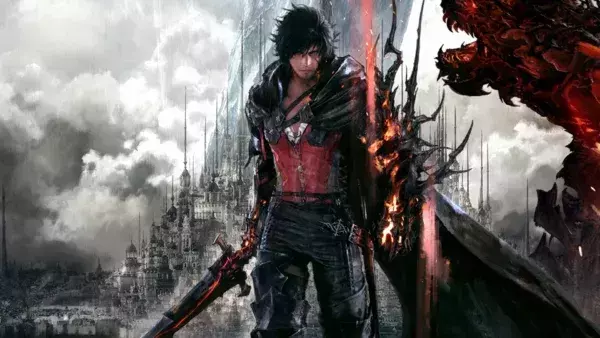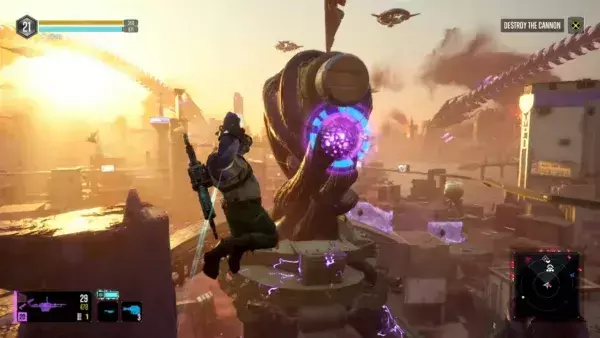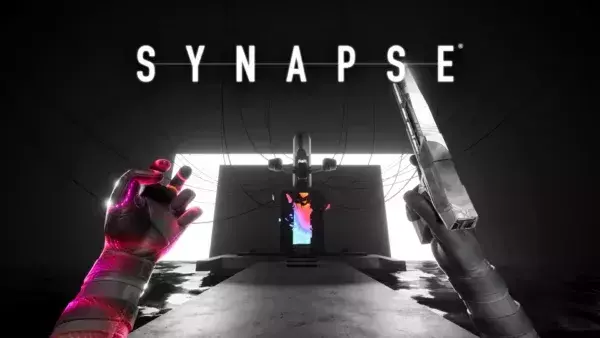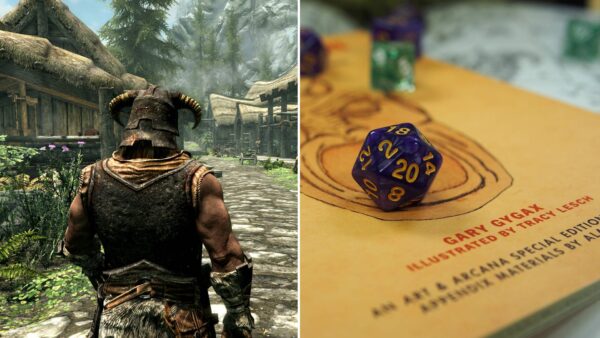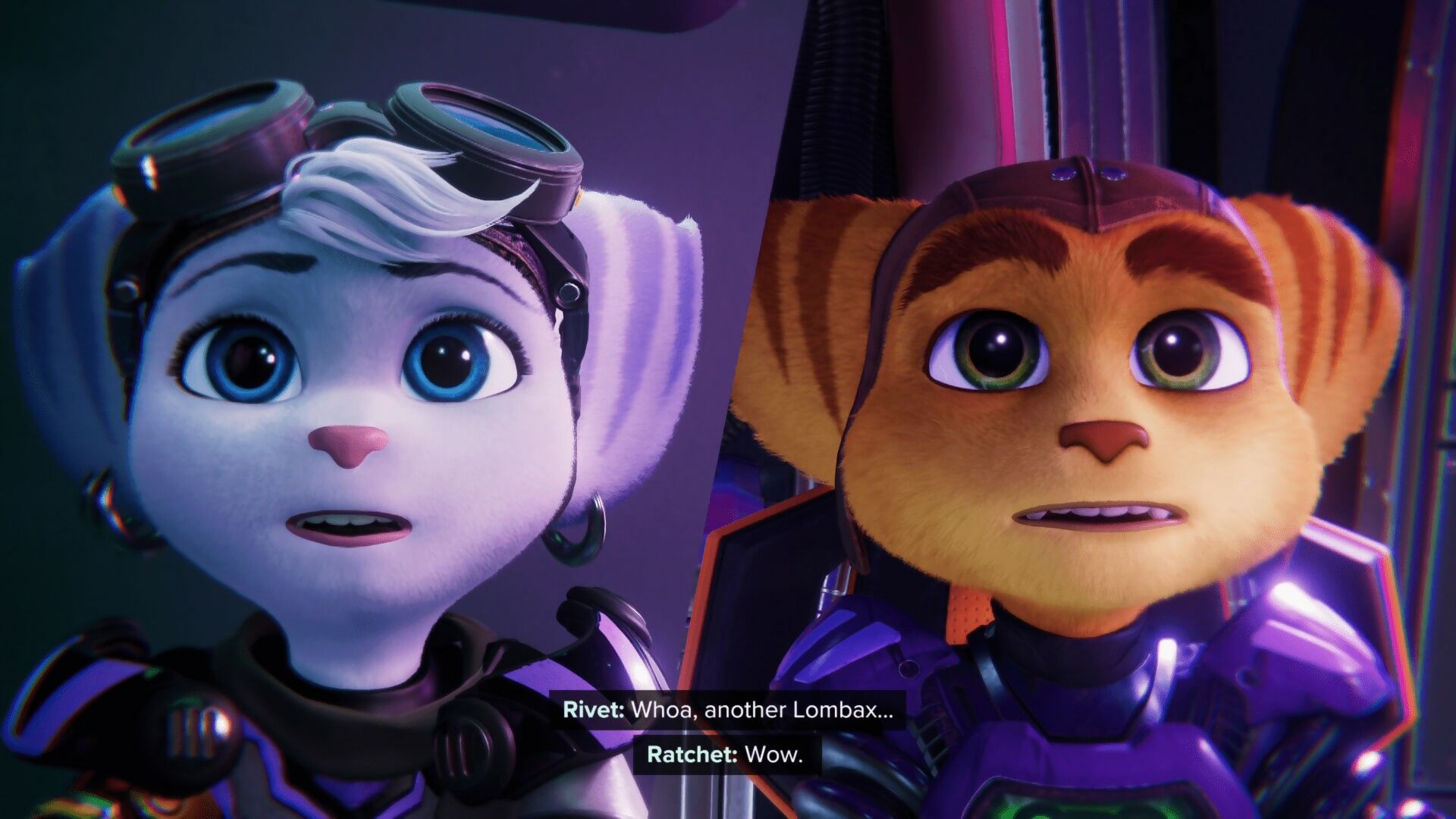
Insomniac’s latest game epitomises the qualities seen in triple-A ‘prestige’ games of the past decade. It’s polished, merges the action/platforming and shooter genres, looks and sounds amazing, and tells a linear ‘hero’s journey’ tale that feels like playing a blockbuster movie. But in my experience, that last point conceals heaps of nuance: many new writers I’ve taught have assumed that since these games feel straightforward, like a film, that the writing is simply a screenplay with breaks for game action. This ignores oodles of vital narrative work, so this month I’m breaking down all the various modes through which Rift Apart delivers its story content.
MAIN PLOT
Cutscenes, firstly, are relatively well-understood, so I’ll keep this brief. They play exactly like a scene in an animated film, they have a linear script, precise timing and action, and the player can’t exert any control over the game. Cutscenes are often written in screenplay format.
Critical dialogues are nearly unmissable and contain important tutorial, context, or character-building content which happen during play, while the player’s performing another action, such as exploring a new environment. Typically this consists of the player character talking with their sidekick about something they’ve seen: a recent plot event, a puzzle they’ve just discovered, etc. This usually doesn’t occur during fights, presumably since the player would be too distracted to take it in, or because the dialogue would get in the way of combat audio cues. These conversations are important to the game, and are timed so the player will hear them in their entirety before triggering a fight or cutscene.
There’s an ‘interruption’ system in place in case the player enters, say, a shop interface during one of these conversations: each critical dialogue has secret ‘checkpoints’ throughout it, and if the player disrupts the conversation, the character will cut themselves off with an ‘insert-line’ such as “Hold on a minute!”, then when the interruption is over (player leaves the shop interface etc) will begin again with another insert-line such as “Now where were we? Oh yeah!” before continuing the dialogue from the last checkpoint.

In other games, cutscenes might require a button press, known as a quick time event (QTE), to progress, but the principle is the same.
ADDING LIFE
Incidental dialogue is the less important dialogue that happens during gameplay. It doesn’t contain critical information, doesn’t resume if interrupted, and may or may not have anything to do with the plot. Generally, these dialogues occur between the protagonist and sidekick again, and provide world- and character-building. They are usually short: an exchange of quips, say, between the characters about some past adventure.
Barks are the best example of narrative polish. Essentially, a bark is yelled by an enemy when they’re about to shoot. Writers have to come up with a number of variants: from the simple “Attack!” to more specific things like “For the glory of Emperor Nefarious!”. But barks are so much more than that. Games are lengthy, and the player may easily go for long stretches between cutscenes or critical dialogues. Barks fill that void, and are triggered by or during common gameplay actions. They can be throwaway lines muttered by your character about the current destination, cries of pain or impatience, sales lines spoken by shopkeepers, or calls for help from quest givers. Barks are the chatter that make the game world feel consistently alive, rather than only alive at certain points. They’re not plot-critical, but think of almost any triple-A game, and you’ll find a vital part of its atmosphere is the quality of the repeated, enlivening barks.

This particular sequence in Uncharted 4 is the earliest example I can find of a game applying an ‘interruption’ system to voice performances.
Environmental dialogue is differentiated from incidental dialogue by the way it’s located. Environmental conversations are generally short scenes played out between other characters and only ‘eavesdropped’ on by the player, who may choose to stop and listen, but will often simply blast past catching a snippet. For example, while exploring a bar location, if you approach a certain booth you will hear its inhabitants getting snippy with their robot waiter. While this doesn’t add to the plot, many of these environmental dialogues intersect with the themes or events at play in the story, providing a kind of vox populi. Alongside barks, they contribute considerably to imbuing the fictional world with aliveness.

Rift Apart departs from the main series’ format by introducing a deuteragonist structure: two Lombaxes, plus occasionally playable sidekicks.
EXTRA CONTEXT
Collectable lore is probably the second most widely understood method of implementing narrative in a game (with cutscenes being #1). Almost every major game in the last 20 years has had world, character, or story information attached to objects which can be found in the environment, from Gone Home’s scraps of paper, to BioShock’s audio logs, to Dark Souls’ inventory item descriptions. Ratchet & Clank is no different, having no less than four different types of lore-collectable. Most on the nose are the ‘Lorbs’ (literally orbs filled with lore) and Spybots, which unlock audio logs in the pause menu. Then you have the Gallery, which has lengthy lore text about every character, unlocked through story progress or finding Gold Bolts. Lastly, each piece of collectable armour is accompanied by a sentence or two of context on its fictional origin.
So, even a ‘straightforward’ blockbuster like Ratchet & Clank has at least six distinct modes of narrative delivery, few of which would make sense to be written down in a screenplay. Instead, even games which appear filmic require a number of different systems and disciplines to tell a story. And this can be put to use: consider which of these you could use in your games to breathe more life into the fiction.
Keep it fictional
I’d be remiss not to mention Zurkon Jr.’s preview videos, which are in-fiction advertisements for weapons. They function as a tutorial explaining each weapon’s features, and I didn’t find much lore in the scripts, but they’re written and performed with such strong tone and character that I’d class them as actively world-building, reminding me of the interdimensional television adverts from Rick and Morty or the satiric ads in Starship Troopers.


